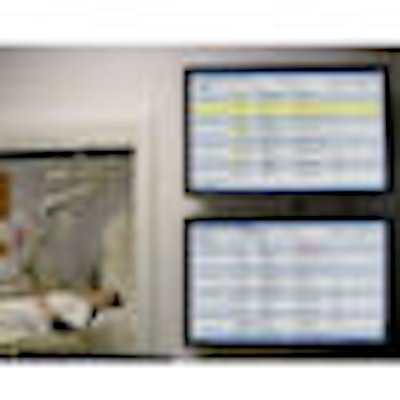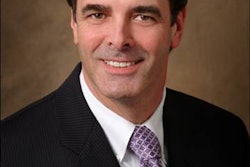
It doesn't take a rocket scientist to figure out how hospitals can take control of their radiology workflow and scheduling. Or does it?
A new company called Allocade is exploring that question as it takes technology developed to manage work on the Hubble Space Telescope and applies it to organizing radiology workflow. The Menlo Park, CA, firm is beginning to roll out its On-Cue software, which it describes as a dynamic "rescheduling" application designed to help radiology departments better manage the frequent interruptions and schedule changes that can occur during the course of a day.
A typical radiology department is often a picture of organized chaos as staff struggle to balance imaging studies scheduled in advance with urgent cases that need immediate attention. Paper-based schedules are woefully inefficient in managing this chaos, and even electronic scheduling software doesn't adequately address the need to handle the disruptions that are a routine part of healthcare, according to Rick Smith, president and CEO of Allocade.
On-Cue can help a department deal with scheduling chaos by enabling it to better allocate resources and manage the disruptions that require patient rescheduling. The technology was originally developed to help space scientists manage technology on the Hubble Space Telescope, where there are multiple scientific instruments whose functions need to be coordinated to work properly.
 |
| With Allocade's On-Cue software, medical displays (at right) alert radiology staff to the status of patients and help manage scheduling interruptions. Image courtesy of Allocade. |
On-Cue works by pulling data from a facility's RIS or PACS at the level of the data exchange broker and sending it to the software's resource management engine. The engine can route emergent studies to the department's most appropriate resource, reschedule existing studies, and alert relevant hospital staff to the new status of all studies. Radiologic technologists and staff outside radiology can view the entire process with dedicated medical displays.
For example, if a stroke patient is admitted to a hospital's emergency room, On-Cue can route the study to the facility's 64-slice CT scanner, while noncontrast head studies might be rerouted to the department's four-slice scanner. Radiologists and emergency physicians caring for the patient can view the patient's status via a Web connection.
On-Cue also works well for scheduled patients, Smith said. In the case of an inpatient from the floors, technologists can use the software to notify floor nursing staff when a contrast line should be started or patient transport arranged based on the scheduled appointment time of the imaging exam.
Allocade installed the technology at its first beta site, Sutter Health's California Pacific Medical Center (CPMC) in San Francisco, in 2006. On-Cue helped the radiology department increase its procedure volume in CT by 12%, with the same number of full-time employees on staff, and even helped it reduce its overtime. CPMC's radiology staff also found that they were able to reduce the amount of time spent on the phone communicating patient results to less than 15 minutes an hour.
Another Sutter Health facility using On-Cue is Mills-Peninsula Health Services in Burlingame, CA. The facility installed On-Cue five months ago, and radiology staff members expected to be using the software in parallel with their paper scheduling approach for some time while they learned the new system. Instead, the radiology department threw out the paper schedule after a week, according to Jeff Gerard, regional executive officer for Sutter Health.
"What's nice about Allocade is that they take a dynamic, real-time approach to the concept of scheduling," Gerard said. "When things change, the system helps identify the opportunity to maximize throughput as a result of those changes. That dynamically scheduled model versus static scheduling is unique about this product."
Allocade began commercial shipments of the first On-Cue module, for CT, in January 2008 and now has modules for MRI, ultrasound, and interventional radiology. The company is developing modules for nuclear medicine, PET, radiography, radiography-fluoroscopy, and mammography modalities and ultimately hopes to release versions of On-Cue for cardiology and surgery. Customers can buy either one modality module, or software to manage an entire radiology suite, Smith said.
The company has assembled a team of executives with experience in both medical imaging and healthcare. Smith previously was with the ultrasound division of Siemens Healthcare, known as Acuson prior to Siemens acquiring the company in 2000. Joining him are several other Siemens/Acuson veterans, as well as executives with experience at Stentor, the PACS firm that was acquired by Philips Healthcare in 2005.
Gerard sees a promising market for On-Cue, based on his experiences with it at Mills-Peninsula.
"It will definitely impact productivity," he said. "I imagine a world where we use a product like this to schedule all procedures in a hospital."
By Brian Casey
AuntMinnie.com staff writer
September 17, 2008
Related Reading
Allocade names Smith president/CEO, August 29, 2008
Copyright © 2008 AuntMinnie.com



















